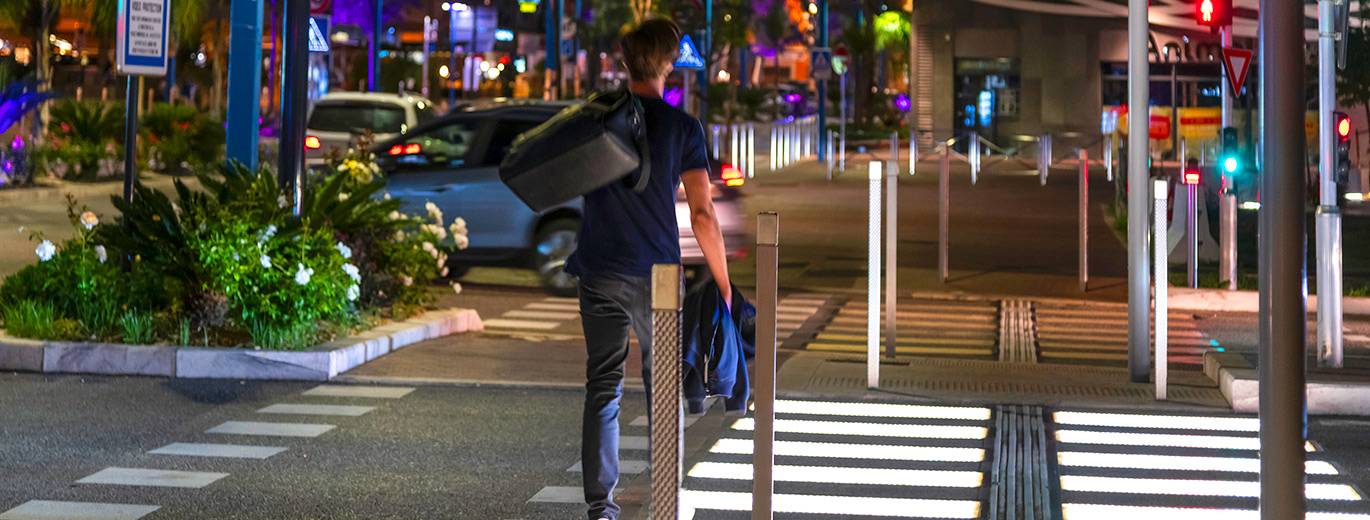
A bright idea for safety
Road safety
Colas rolled out its dynamic road marking system Flowell at Mandelieu-La Napoule, on the French Riviera, in 2019. Trials of this innovation are underway in other places too, and the first results are now in.
By Céline de Buttet in 2021
what is flowell?
Flowell is a luminous road marking solu-tion that lights up when triggered by sensors, thus increasing visibility for users and improving the sharing of public spaces. Activated only when users are present, it smooths traffic flows even at busy intersections while encouraging compliance with traffic regulation. “The idea is to deliver the right mes-sage, at the right time, to the right person. That way, motorists are not stressed by unnecessary information,” explains Emmanuel Orlianges, assistant director, Business Development Flowell, at Colas.
Still in the test phase, Flowell is not yet an officially recognized road system and is not being marketed for now. “Road safety is one of the most highly regulated areas in the world,” notes Orlianges. “So far, we have obtained authorization from the French ministry to conduct tests.”
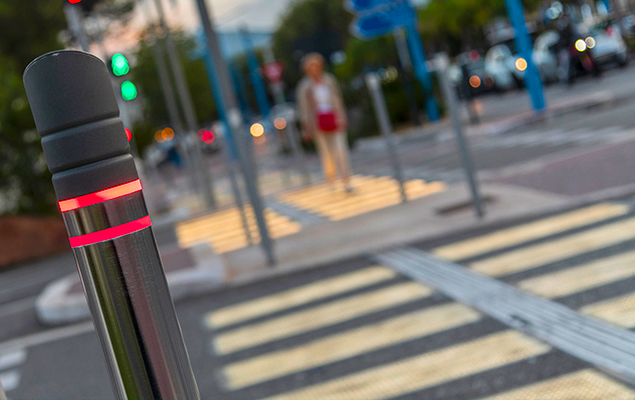
how it works?
The Flowell system consists of panels in which LEDs are encapsulated in a mul-tilayer substratum and connected to the electrical network. The panels, which are only 7 mm thick, are connected to control terminals that regulate the intensity of the light. They can be glued on or embed in the pavement and they offer the same roughness as a conventional surface course.
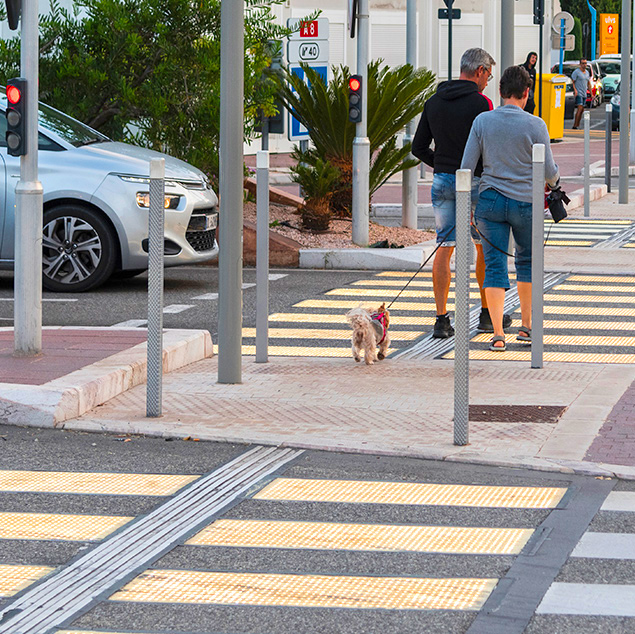
The idea is to deliver the right mes-sage, at the right time, to the right per-son. That way, motorists are not stressed by unnecessary information,
assistant director, Business Development Flowell, at Colas
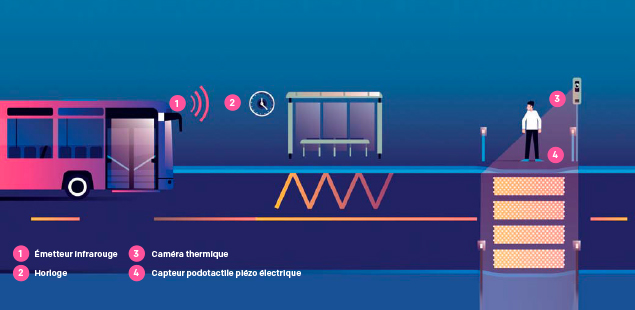
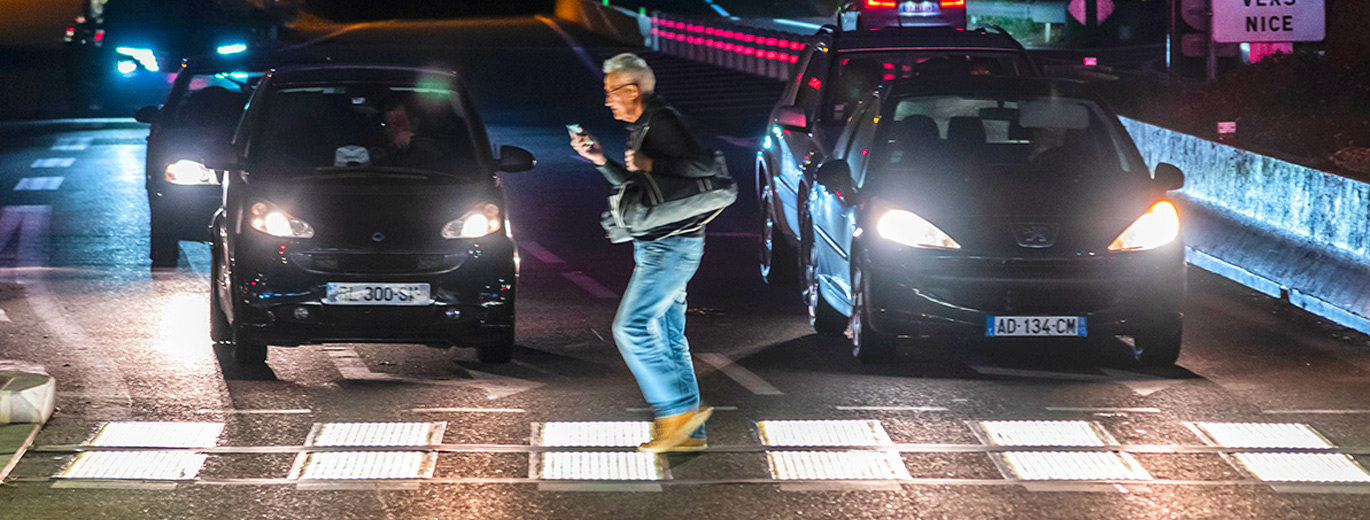
Mandelieu-la Napoule, the first pilot site
At the request of the town’s mayor, Mandelieu-La-Napoule became the first Flowell test site. Colas installed the system in February 2019 at a location in the city center where ensuring safety is particularly difficult: an interchange on the A8 motorway. There are four pedestrian crosswalks in a row here. Three of them are equipped with ordinary traffic light, while at the fourth, at the exit from the motorway, there is a sensor at the crosswalk that detects the presence of pedestrians. Because the Flowell system is new, pedestrians did not behave totally normally at the beginning of the trial period, which may have distorted the early results. The impact of the luminous markings is thus assessed both with behavioral studies using cameras and with interviews. “Even if it’s not magic, pedestrians do pay more attention, and there’s a sharp improvement in their behavior,” says Étienne Gaudin, operations director in the Infrastructure and Sustainable and Intelligent Mobilities department at Colas. Thanks to Flowell, motorists and pedestrians alike say they are less stressed when they arrive at this dangerous intersection.
One third of drivers declare they are more attentive to pedestrians, half of vehicles stop less suddenly when approaching the crosswalk, and nearly half of pedestrians cross on a path that more closely complies with safety rules. “While awaiting the next phase of studies, which will start soon, we are already making improvements to the system,” adds Gaudin. For example, we are working on heightening the contrast in the lighting between the day and night. We also want to offer a more economical solution by reducing the cost of the control systems and improving the lighting efficiency of the panels.”
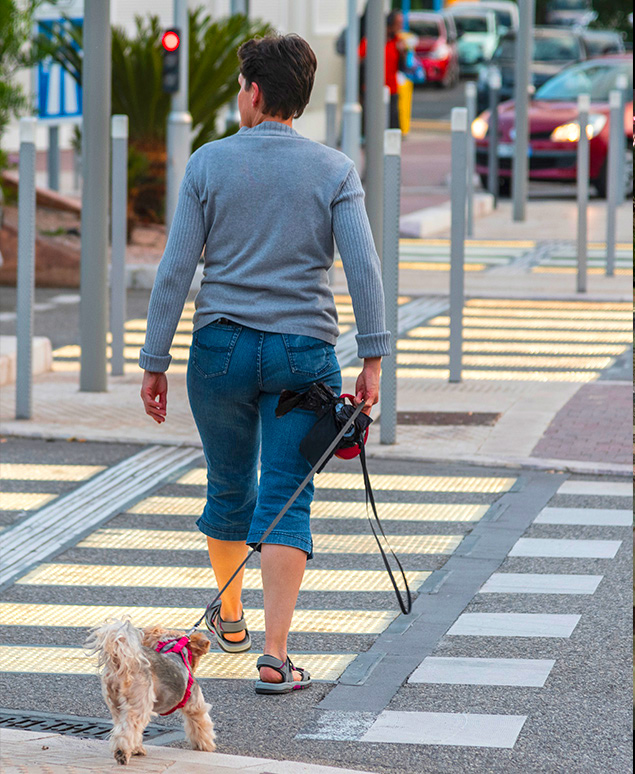
While awaiting the next phase of studies, which will start soon, we are already making improvements to the system. For example, we are working on heightening the contrast in the lighting between the day and night. We also want to offer a more economical solution by reducing the cost of the con-trol systems and improving improving the lighting efficiency of the panels.
operations director in the Infrastructure and Sustainable and intelligent mobilities department at colas
the other pilot sites
After Mandelieu-La Napoule, Flowell was installed at a hazardous intersection in Nantes. To coordinate the operation of several transport modes more efficiently, bus lanes are indicated with a V-shaped pattern that lights up before the bus arrives and is synchronized with the traffic light. Since then, the list of pilot sites has grown, with large cities (Paris), medium-size ones (Nevers, in central France), and rural communities (Boussens, in the southwest), offering opportunities to test a variety of uses. Last but not least, Flowell has traveled abroad, with a trial now taking place at a private site in the port of Brooklyn, New-York.
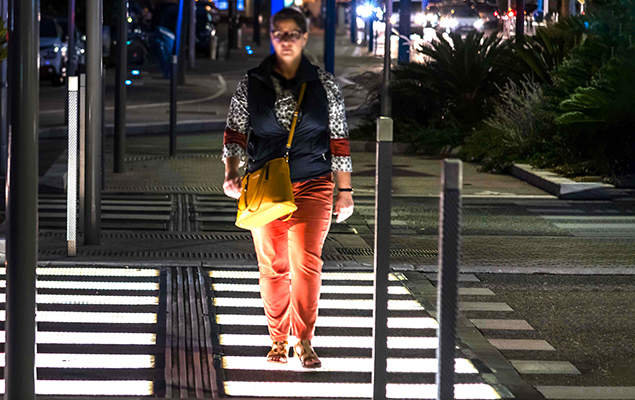
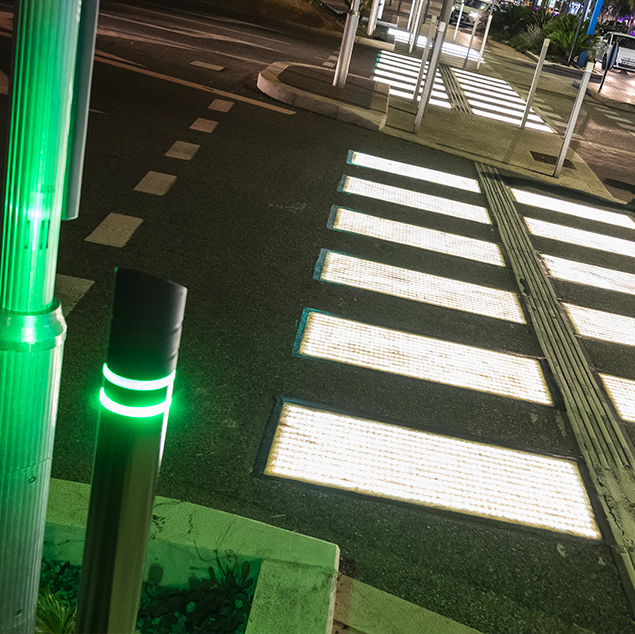
Instructions have already been given to include Flowell in our future developments as soon as the prototype goes into full-scale production.
Sébastien leroy
and tomorrow?
Flowell also has a promising future when it comes to modulating spaces. Dynamic marking makes it possible to change the number of lanes allocated to different means of transport (walking, bicycles, pub-lic transport, automobiles, etc.) depending on traffic conditions and parking demand. Moreover, when space is better adapted to needs, compliance with road safety regulations improves. And Flowell’s applications are not limited to roads. Colas’ innovative solution is versatile and can be modified for use in rail and airport infrastructures too, particularly for guiding vehicles. The possibilities are indeed immense.